1. Fight Condensation With A Plastic Bag
In cold temperatures, condensation is your number one enemy. You should avoid rapid temperature changes with your gear unless you are prepared for it, so that means don’t walk in and out of your home, hotel or ski resort restaurant all the time. Warming a cold camera and lens in this way will immediately cause condensation to form all over it. To prevent this from happening, put your camera and lens into a ziplock bag while you are still outside. This will allows the camera to come up to temperature more slowly, and much of the condensation that does form, will appear on the bag and not the camera.
At the end of your cold weather shoot it’s imperative that all your gear is thoroughly dried out to prevent mildew from forming inside the lens. When I get home, I lay a towel out on the table and remove all the lens caps from my lenses to let them warm up. I also remove the body cap from the camera and place it face down on the towel. Never put the towel directly in front of a heater though! We don’t want to get melted rubber grips or loosened glue inside your lenses.
Some condensation on your gear is inevitable though, so you’ll also want to make sure you have at least a couple of cloths inside your bag to dry them out with. I used to use regular lens cleaning cloths, but then I discovered the amazing PakTowl. These are made of ultra absorbent materials, and actually designed for backpackers who don’t want to carry a lot of weight. The PakTowl Face size of towel is barely bigger than a regular lens cloth, but it absorbs about ten times as much water. Even when my camera gets soaked, this thing dries it out in a second, where regular lens cloths just make it feel as if you’re moving water around from one place to another.
–>> If you do get your camera too wet and it stops working, read our guide about how to revive a wet camera.
2. Warm Your Batteries (+ Bring Extras)
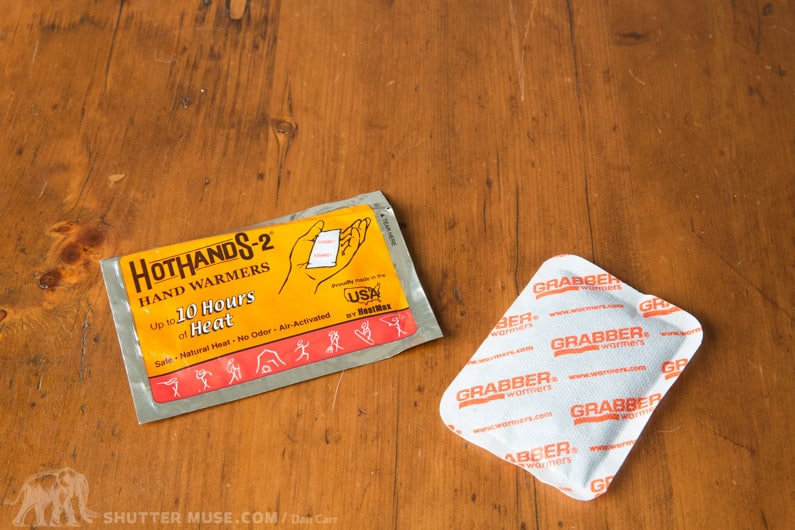
The effect of cold temperatures on your battery life can be severe, depending on the brand and type of batteries you are using. My experiences with Canon 1D-series batteries have been very favourable, and the capacity of those is so high that I’ve tended not to worry about them too much. Smaller batteries for other lower-end DSLRs can suffer from significantly increased depletion rates in colder temperatures though.
At -18°C (0°F) a battery might have as little as half the capacity that it would have at 27°C (80°F). These cold temperatures don’t have a lasting effect on the batteries, but it can certainly be frustrating if you aren’t prepared for it. Thankfully the solution is simple, just add a little warmth and bring a few spares. Lots of bulky batteries aren’t practical to put inside your jacket so you can simply use oxygen-activated hand warmers and an elastic band to keep them up against your batteries. Boxes of hand warmers aren’t expensive and they can always come in handy for their actual intended use as well!
3. Rain Covers
While it is obvious that a camera rain cover can also protect your gear from snow, I wanted to pass on some of my experience with rain covers so that you can make an informed buying decision. I never like to let the weather dictate whether I can shoot because sometimes it takes me a lot of time and money to get to a location. I’ve got to try and return with something, no matter what Mother Nature throws at me. In cold environments, this often means dealing with occasional snow, and even if it’s not falling, it’s constantly drifting around on frozen lakes in places like Banff and Iceland. It doesn’t hurt to cover up your camera, particularly if you don’t have the more expensive pro-level gear that is weather-sealed.
Camera covers come in various shapes and sizes, depending on the lens you want to cover. There’s also a broad pricing spectrum, but I suggest you weigh the pricing against the total value of the gear you are trying to protect. When protecting thousands of dollars worth of equipment, a $9.99 plastic cover doesn’t make much sense.
One of my favorite covers is the fully featured Think Tank Photo Hydrophobia. It’s available in three sizes to suit mirrorless and DSLR cameras with lenses ranging from ultra-wide-angle to 800mm. Each Hydrophobia comes with a front cover to protect the lens element, which is very useful if you’re waiting in blowing snow.
Fully seam-sealed zippers and stitching provide an impenetrable barrier in all the right places. The two hand holes are great for winter shooting because you can get your hands inside to keep them warm, potentially removing the need to use winter gloves or at least allowing you to use thinner, more tactile glove liners while operating the camera.
- Hydrophobia 300-600 V3 – For cameras with a lens size between 300mm and 800mm
- Hydrophobia 70-200 V3 – For cameras with medium-telephoto zoom lenses such as 70-200mm, 100-400mm, 100-500mm
- Hydrophobia 24-70 V3 – For cameras with short primes, wide-angle, and standard zooms such as 24-70mm, 24-105mm, 16-35mm, or 14-24mm
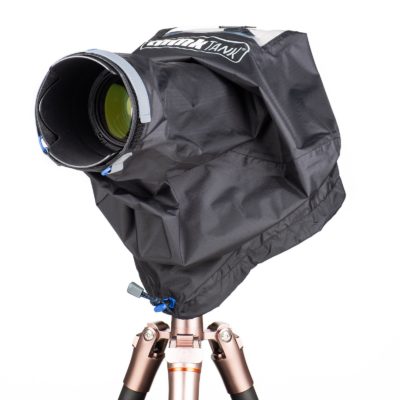
Check out the Think Tank Emergency Rain Cover series if you want a cheaper, ultralight option. These are designed with a more minimalist approach and don’t have the useful-in-winter hand holes. However, they are still a thousand times better than just using a garbage bag, and their compact size makes them easier to leave in your bag every day. My camera rain cover guide includes even more options, but these two Think Tank options are my favorites.
4. Desiccant Packs
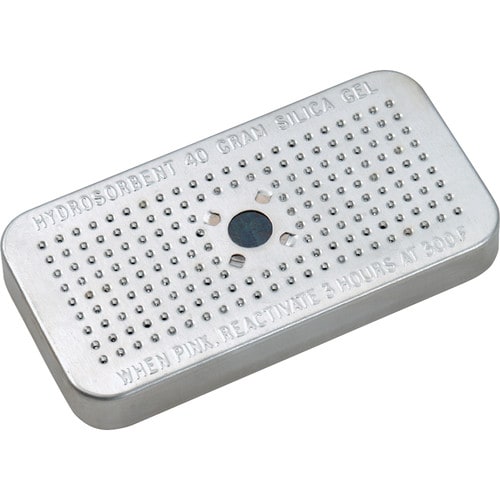
Desiccant is a solid chemical substance that absorbs water and it’s most commonly found in small packets inside items that you’ve just purchased online. Manufacturers include them in the packaging of anything that could be damaged in transit, or storage, from exposure to moisture. I’m sure that you’ve come across them many times! The smaller packs that you might find in clothing purchases aren’t too much use to us on their own, but you can buy much larger ones from B&H Photo, or similar online photo stores.
These larger sizes are a great thing to have in your camera bag in cold and snowy environments. No matter how careful you are, as soon as your bag is open, a small amount of snow will find its way into your bag and melt instantly, creating a damn interior. Desiccant packs in your bag will help to soak up some of this moisture, and they are “rechargeable” by heating them up once you return to your home or hotel. Even if you are in a dry, cold environment, you still run the risk of excessive condensation forming on your gear and the silica desiccants will help to minimize the risks.
5. Keep Your Memory Cards Warm (& Dry)
Whilst high-end memory cards like the Sandisk Extremes have an operating temperature of about -13 to 185 fahrenheit, some of the cheaper cards are not quite as well protected. Unlike the batteries we talked about earlier, there’s no need to use hand warmers on your cards, but you should place your memory card holder in the inside jacket pocket so that it can benefit from some of your body heat. Avoid putting it too close to your core if you are going to be taking part in strenuous activities though, like skiing or snowshoeing. We don’t want to get sweat on the cards becuse moisture is even worse for them than cold temperatures.
If you are working in snow, consider a water-resistant memory card case such as this one from Pelican or consider placing your regular memory card holder into a waterproof case like the eCase in the photo below.
If you want to read more about my general recommendations for memory card holders, check out our guide to the best memory card cases on the market today!
Bonus Tip!
Best Photography Gloves?
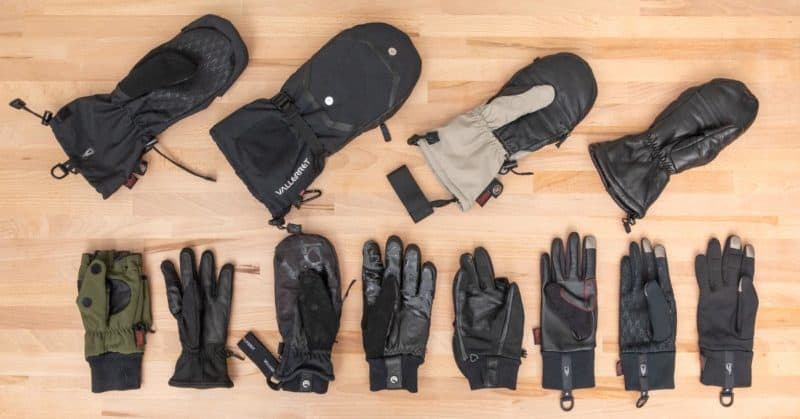
If you’re trying to protect your camera then it probably means you need protecting as well. When it comes to cold weather photography, I’m always getting asked what kind of gloves I wear, so I created a post to explain the choices. Find out what kind of gloves I use here: What Are The Best Photography Gloves?


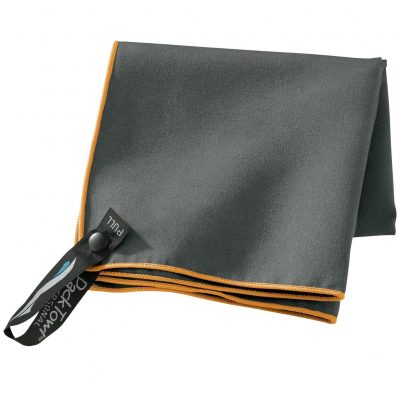
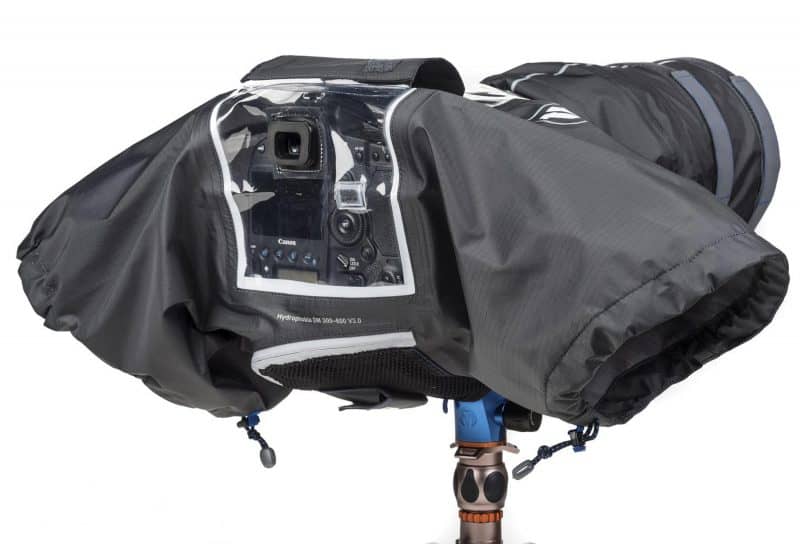
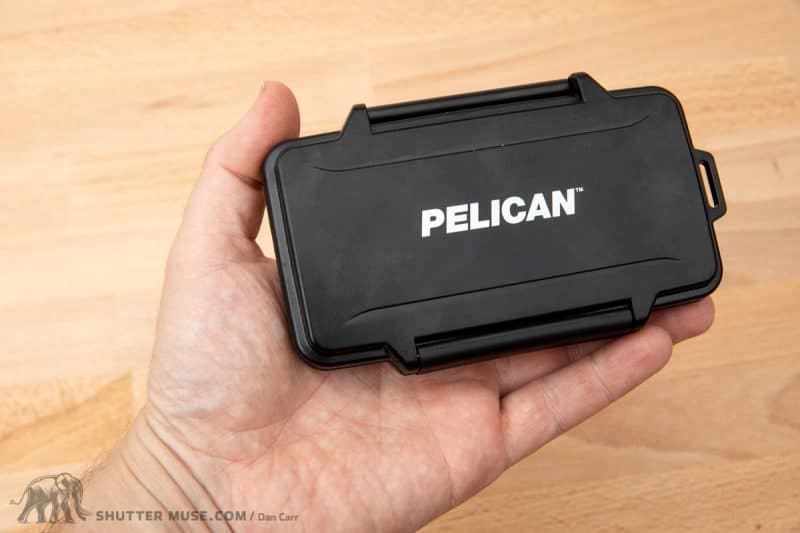
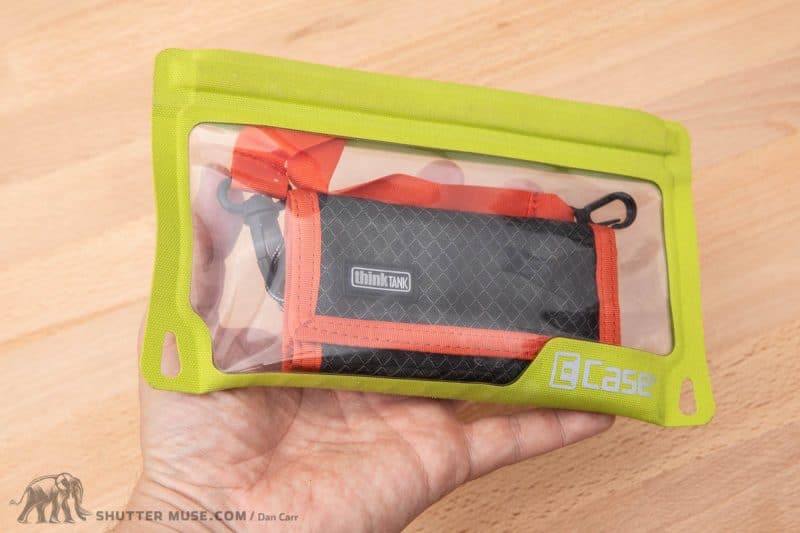



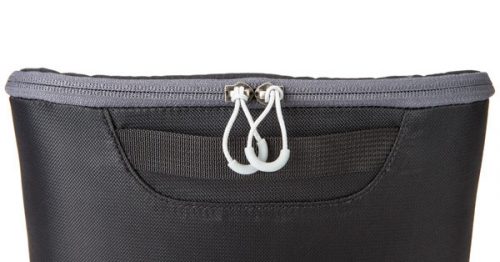
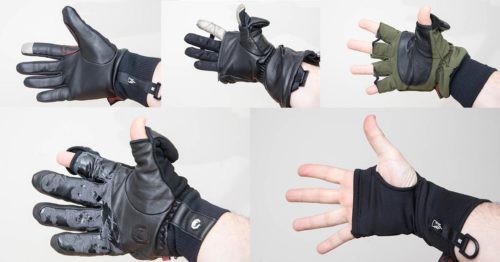
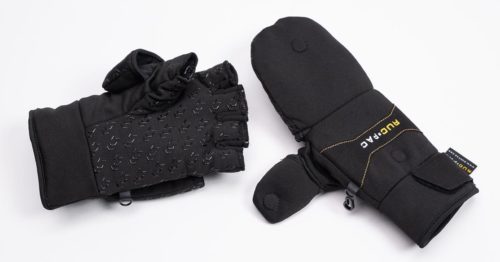
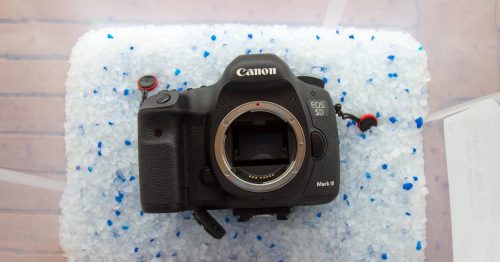
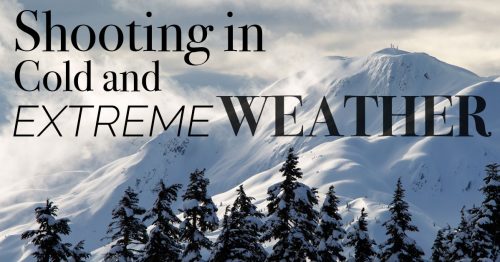
I used a Camera Parka from AT Frosted Lens (http://atfrostedlens.com/) to protect my DSLR when doing night photography, landscapes in winter wonderland. It is water repellent, blocks wind, has fleece inside for insulation. It is made from Polartec fabric and easy to maintain. I like the sleeves on the sides to access camera settings and keep my hand warm when changing setting!
Wow thanks for sharing that! Never seen one of those before!!
Thanks for the post Dan. I’m going on a walking polar bear safari in November and have never shot in really cold temperatures. This post is very helpful as I prepare. 🙂 Susan
Well that sounds amazing! Where are you headed?
Any recommendations for an action camera? I am going to live with the indigenous tribe the Nenets for 2 weeks this month for the reindeer migration. I am not a professional photographer but I would like to document this trip. It could be as cold as -40. Thanks!
Wow, that sounds incredible! Action cameras tend to be pretty robust little things, but they don’t have great battery life in the cold weather. You are definitely going to want some spares, and you’ll want to keep them very close to your body. Some kind of under-the-shirt travel wallet might be a good idea so that your body heat can really keep them going. Have fun!
Thanks for the great advice. I have a related question. We have a cottage in Algonquin Park in Ontario, Canada. The park is closed from October to April/May. I would like to set my camera up to take at least a daily photo during the time the park is closed. The obvious challenges are keeping the batteries charged (solar power setup?), protecting the camera and lens from the cold and snow (Perspex box attached to a tree?), and preventing condensation. Do you have any recommendations or links which may help in this project? Thanks, Julius.
That sounds like a wonderful project but it’s well beyond anything i have ever done like that. You seem to have a good handle on what the challenges will be, so I think you’ll just have to jump on Google. I don’t have any specific ideas of places to look for the information unfortunately.
Thanks so much for your reply. I’ll keep looking!
I guess you could use a Trail Camera… https://shuttermuse.com/using-a-trail-camera-to-research-wildlife-photography-locations/
It’s not the same quality as a DSLR, but it is a simple solution. They can sit in cold temperatures for months on one set of batteries.
If you draw a blank on the DSLR setup, this would be a good backup plan. They can be set to trigger on a time interval, not just triggered by wildlife movement.
That looks awesome to be honest. Easy to mount, camouflaged, no condensation issues, and no concerns with battery life. This would likely be cheaper than any remote setup for a DSLR with the only con being picture quality, which I can live with as 20-24 mpxl isn’t awful. Thanks again for a great suggestion. Much appreciated.
>It’s been said that an 18 °F drop, can lead to a battery life of half what you would normally expect
Wow, that’s a pretty dramatic loss of battery… I’m wondering though, an 18 degree drop from what temperature? Or is this saying that every 18 degrees the temperature drop, your battery life halves?
Hmm good catch. I think I must have made a mistake here. I have corrected that paragraph because there were multiple mistakes with it.
Would a dry bag work as well as a ziplock bag? I will be visiting Yellowstone in February for scenic and wildlife photography. My long lens would not fit in a ziplock bag.
Yes a dry bag should work fine. What kind of lens do you have?
I have an 80-400mm, so attached to the camera, it would not fit a ziplock. I have been to Kaktovik photographing polar bears, but that was in September. Still very cold, but no snow, and not well below freezing as it could be in Yellowstone. Just don’t want to ruin a great lens.
Yep, that’s fair. Use a bag if you can, but the other much simpler solution is just to not go in and out of hot/humid places into the cold all the time. Leave the lens out in the cold. It’s the movement to and from hot to cold environments that can cause the condensation issues.
I am traveling to Antartica Nov 25-Dec 13, 2018. I need to prepare my camera and batteries. How do I recharge my batteries in the cold climate or should I try to “hand warmers” you suggested.
Well I would use some hand warmers to try and keep them charger when you aren’t using them. When you have used them and they need recharging, there’s no reason why you can’t charge them with your normal battery charger.
Hi Dan, great information in all your posts. I’m teaching a photo class in the Extension Program at the University of California, Santa Barbara and would love to add a link to your sites in my student handout package. Is that OK with you?
Absolutely, Ralph. Please feel free to do that. Thanks for the kind words.
I usually don’t comment, but this is a really nice blog, and I am learning many new things.
Thank you a lot. Keep writing and spreading more useful information with us.
“Your positivity is contagious. I always leave here feeling uplifted!”